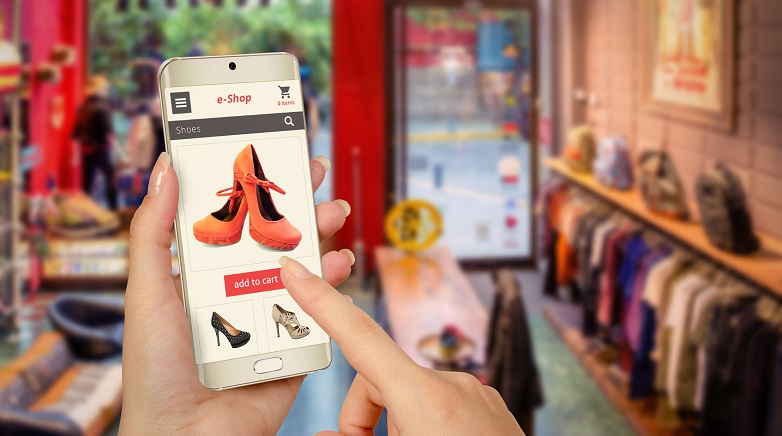Save 50% on a 3-month Digiday+ membership. Ends Dec 5.
“Covid was a huge catalyst”: Brands look to maintain improvements in returns process

The boom in online shopping caused by the coronavirus has put the logistics of returns front and center.
“There was already a trend of brands innovating here in the last 3-5 years,” says Mark Geller, co-founder of Happy Returns. “Covid was a huge catalyst for accelerating those trends.”
Flexible return policies helped fuel the earlier holiday shopping season, and now consumers expect them to be the norm. A report by PwC found that 53% of consumers said return policies impacted where they choose to shop. Brands are now actively working on how they can keep improving the customers’ returns experience, while keeping their own reverse logistics costs low.
One way to do this has been expanding where consumers can drop off returns. The desire for and use of alternative drop-off locations has nearly doubled since last year, according to a report by Narvar. In 2020, 22% of consumers had used a pharmacy or locker to make a return, compared to 13% in 2019. Nearly 33% said they wished they could return items to the nearest store, like a grocery store or convenience store.
“We’ve seen a significant increase in customers who choose to return in person versus by mail,” says Geller. “More than half of all returns are now coming in-person.” This is possibly due to consumers thinking quick in-store returns are fairly safe, that it allows them to bundle many errands or that they simply want the instant gratification of a refund or exchange.
Even with the benefit of in-store returns, Walmart has introduced free pick-ups from FedEx, even beyond returns season. Amazon has partnerships with Kohl’s, UPS and Whole Foods locations. Happy Returns has partnered with FedEx offices for QR, boxless returns.
“In the last 12 months, we’ve seen use of QR codes nearly double,” says Amit Sharma, CEO of Narvar. The desire for label-less returns has increased from 15% in 2019, to 28% in 2020 according to a report by the company. And now that most customers don’t have easy access to the office printer or packaging, clients have ramped up printerless returns.
Ad position: web_incontent_pos1
Another way to lower operational costs comes post drop-off. Retailers have started using their warehouses for outbound and inbound shipping. “Even large retailers have a lot of returns go to one location,” says Sharma. “But now we see them use them for new orders as well as accepting returns.” This can cut costs as products travel a shorter distance, there is more capacity across multiple warehouses, and refunds can be processed quicker.
Some retailers like Amazon and Target are telling customers they can keep smaller items, but still receive a refund.
“Retailers know the cost of the good, the cost of handling, of reselling, and it may not make financial sense to have an item returned,” said Tyson Cornell, consumer markets lead at PwC.
Depending on the item, retailers may suggest donating it, like giving the wrong can of green beans to a food bank, or gifting a toddler onesie that’s too small.
Cornell notes that there is a small concern around customers buying something and falsely returning it. “We want to make sure that consumers don’t take advantage of purchasing items just to ‘return’ them.” Overall, retailers think that the percentage of consumers who do this purposefully is negligible.
Ad position: web_incontent_pos2
But many DTC brands may not have the margins to just let consumers keep products. Geller says another way for these brands to reduce returns is more up front data. For items that can’t be touched or seen in a storefront, photos and reviews and detailed descriptions can help consumers be more confident in their online buys, and reduce returns.
Going forward, Sharma says that retailers could use quicker returns or rewards as part of loyalty programs. “These are usually good for promotions or discounts, but maybe another way to reward consumers would be immediate refunds or longer return windows,” he says.
“We are used to the best returns processes now,” said Cornell. “Consumers will be expecting that going forward.”
More in Media

What publishers are wishing for this holiday season: End AI scraping and determine AI-powered audience value
Publishers want a fair, structured, regulated AI environment and they also want to define what the next decade of audience metrics looks like.

Digiday+ Research Subscription Index 2025: Subscription strategies from Bloomberg, The New York Times, Vox and others
Digiday’s third annual Subscription Index examines and measures publishers’ subscription strategies to identify common approaches and key tactics among Bloomberg, The New York Times, Vox and others.

From lawsuits to lobbying: How publishers are fighting AI
We may be closing out 2025, but publishers aren’t retreating from the battle of AI search — some are escalating it, and they expect the fight to stretch deep into 2026.
Ad position: web_bfu




